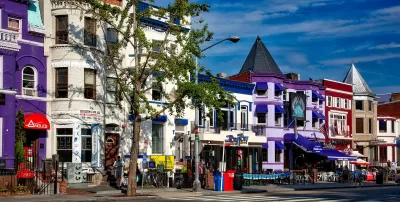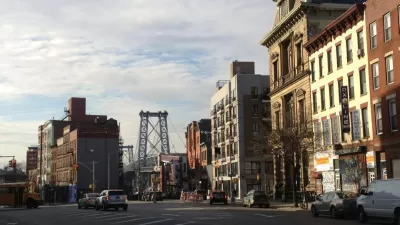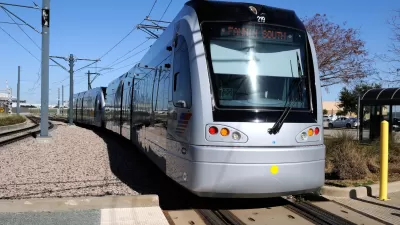Modern zoning practices separated uses, claiming this was a better way to organize American cities. However, the social, cultural, and urban design outcomes drastically changed the world we live in.

A new video from the Institute for Humane Studies at George Washington University takes a closer look at the history of zoning in the United States and the effects zoning has had on the design and makeup of cities.
During the 1920s and 1930s, modernist planners moved to separate land uses in cities. They said it was a solution to nuisance and pollution problems, but it was also a way to promote the single-family home and, by extension, the nuclear family. One of the main effects of single-family zoning was to drive up the cost of housing, as housing densities decreased and supply failed to meet demand, says economist Sandy Ikeda.
Starting in the 1950s, cities started rezoning and designating particular areas as blight. The result was the forcing out of residents in poor and minority neighborhoods. In addition, zoning laws helped perpetuate segregation and discriminatory housing practices.
Zoning also reshaped the ways cities looked, with a focus on designing for the automobile instead of people. Jane Jacobs challenged conventional planning practices, points out Christina Sturdivant Sani:
She bucked at planners’ separation of people from the bustle of commercial districts, where they could gather with friends and get to know strangers. Because of car-centric planning, she said the modernist planners’ designs made streets less safe and discouraged folks from visiting small businesses.
Jacobs advocated for mixed-use zoning that would encourage more vibrant and diverse street life.
Ikeda says Jacobs’ lessons are relevant for planners today. “Be aware of the consequences. Try to take into account the costs of what you’re doing. The true city, where experimentation goes on, where you have face-to-face contact, where you have social capital, cannot be completely planned, so you have to be modest. You can’t make people use something in exactly the way that you wanted it.”
FULL STORY: How 1920s-era zoning laws separated people from what they love about cities

Planetizen Federal Action Tracker
A weekly monitor of how Trump’s orders and actions are impacting planners and planning in America.

Chicago’s Ghost Rails
Just beneath the surface of the modern city lie the remnants of its expansive early 20th-century streetcar system.

San Antonio and Austin are Fusing Into one Massive Megaregion
The region spanning the two central Texas cities is growing fast, posing challenges for local infrastructure and water supplies.

Since Zion's Shuttles Went Electric “The Smog is Gone”
Visitors to Zion National Park can enjoy the canyon via the nation’s first fully electric park shuttle system.

Trump Distributing DOT Safety Funds at 1/10 Rate of Biden
Funds for Safe Streets and other transportation safety and equity programs are being held up by administrative reviews and conflicts with the Trump administration’s priorities.

German Cities Subsidize Taxis for Women Amid Wave of Violence
Free or low-cost taxi rides can help women navigate cities more safely, but critics say the programs don't address the root causes of violence against women.
Urban Design for Planners 1: Software Tools
This six-course series explores essential urban design concepts using open source software and equips planners with the tools they need to participate fully in the urban design process.
Planning for Universal Design
Learn the tools for implementing Universal Design in planning regulations.
planning NEXT
Appalachian Highlands Housing Partners
Mpact (founded as Rail~Volution)
City of Camden Redevelopment Agency
City of Astoria
City of Portland
City of Laramie





























